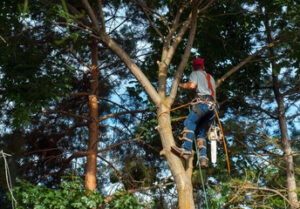Lawyers are highly trained professionals who use their skills and expertise to advocate for their clients. They are also responsible for observing the rules of professional conduct and substantive and procedural law.
They may also negotiate settlements on behalf of their clients, and they prepare legal documents such as contracts and agreements. They may charge hourly or on a contingency fee basis. Contact Ask The Law Doc – Gershon Willoughby & Getz now!

When people hear the term lawyer, they often think of someone who argues cases in court. However, the role of lawyers is much broader than this, and they are often called on to perform many other duties. To become a lawyer, you must complete law school and pass a bar exam. Depending on your area of expertise, you may work for private clients, the government, or nonprofit organizations. Lawyers are able to handle legal matters that involve anything from writing contracts to filing criminal charges. The exact nature of a lawyer’s duties varies from country to country. In England, for example, the profession is split between barristers, who plead in higher courts, and solicitors, who do office work and are not allowed to appear before judges.
Lawyers are expected to follow certain professional standards, and they must also help ensure that their colleagues abide by these standards as well. They have a number of competing loyalties in their work, including loyalty to their clients, to the administration of justice, and to their associates in practice. When these loyalties conflict, the law’s professional rules are designed to effect a reconciliation.
Another important function of a lawyer is to help their clients understand their legal rights and obligations and explain these in practical terms. They are also expected to advise clients on the best course of action in a given situation. In addition, they should provide guidance on ethical issues.
Attorneys and lawyers share common characteristics, such as being formally trained in law and having passed the character and fitness exam to enter the legal profession. Both attorneys and lawyers must take continuing education courses to stay up-to-date on changes in the law.
Licensed lawyers must also maintain attorney-client privilege, which protects communications between them and their clients. However, a client’s confidentiality is not absolute, and the lawyer must still disclose confidential information if it would benefit the public or their client’s case. The lawyers must also adhere to the ethical standards set by their state bar association. They must be competent, prompt and diligent in performing their duties. If a lawyer fails to meet these standards, they can be disciplined.
They prepare legal documents
Lawyers are trained professionals who offer advice and representation on legal issues to individuals, businesses, and organizations. They work in various areas of law, including civil litigation, criminal defense, corporate law, family law, and real estate law. Attorneys may specialize in a particular practice area or act as general practitioners, depending on their expertise and interests.
Preparing legal documents is a crucial aspect of a lawyer’s job. This includes drafting and reviewing contracts, agreements, and other written legal documents. It also involves consulting with clients to determine their needs and interpreting laws and regulations. During this process, lawyers must also communicate with other attorneys and judges.
They also draft letters to opposing parties in order to resolve a dispute without a lawsuit. These letters may be in response to a demand or as a legal notice. Other types of legal documents include directives and agreements that establish rights or obligations between two or more parties. These can include a will or trust, a contract to purchase property, and corporate bylaws. Lawyers prepare these documents by researching the relevant legal issues and negotiating with the other party.
Other legal documents are more complex and require a great deal of time to prepare, including motions and briefs. These documents are used to present arguments in court and must be prepared according to strict rules. In addition, they must be filed within certain deadlines. This can be very time consuming, and many people prefer to hire an attorney to prepare these documents for them.
Besides preparing legal documents, lawyers are responsible for conducting research on the law and legal precedents. They are also required to maintain continuing education and professional development. This is important because legal practice is constantly changing, and attorneys must keep up with new laws and regulations.
Once a lawyer has completed their degree, they must pass a character and fitness examination in order to earn a license to practice law. This milestone is the culmination of years of study, training, and preparation. It is the final step in the legal process, and it allows attorneys to represent clients in court proceedings. It is also a sign of their commitment to pursuing justice and upholding the integrity of the legal profession.
They give legal advice
Legal advice is a term used to describe a professional’s opinion about a specific legal situation. It may include a recommendation for a course of action, and can be given in written or oral form. Lawyers are trained in the law and can offer expert opinions about different situations. They can also advise businesses on compliance with laws and regulations. They can help with legal issues such as employment law, taxes, and licensing.
The difference between legal information and legal advice is important. It is why many attorneys and lawyers include a disclaimer on their websites, explaining that they are not giving legal advice unless there is an attorney-client relationship. In addition, they must follow a series of rules and regulations set by their state bar associations. If they do not, they could be reprimanded or even disbarred.
Lawyers are also required to complete continuing education to keep up with the latest legal developments and trends. They are trained in a variety of practice areas, including family law, criminal law, and corporate law. Some lawyers specialize in certain practice areas, while others work as general practitioners.
Some lawyers also give advice to other professionals, such as doctors and insurance agents. This is done to ensure that the public receives the best possible legal advice and services. Lawyers can also help with interpreting the law, which is particularly important when dealing with complex legal issues.
While some individuals think that they can handle their own legal matters, it is always best to consult a lawyer before making any major decisions. They can provide valuable insight and assistance, which can save you time and money in the long run. They can also help you avoid costly mistakes and potential penalties. It is not unusual for lawyers to charge a fee for their legal advice. However, this fee is usually less than the cost of a trial or settlement. Some lawyers also offer free consultations to prospective clients. This way, they can assess whether their legal services are right for the client. In addition to advising clients on the law, lawyers can also represent them in court or negotiate contracts and agreements.
They charge a fee
Lawyers charge a fee to help their clients navigate the legal system. They can charge hourly, flat, or contingency fees. The type of fee they charge depends on the case and its complexity. They also often bill for other expenses, known as disbursements, such as photocopying fees, courier charges, and bank charges. These costs can add up quickly. Some lawyers may advertise their rates on their website or in magazines. Others may charge a fixed fee for routine work, such as creating a will or filing bankruptcy.
In most cases, the attorney will quote you an estimate of how long the work will take before beginning. However, unexpected things can happen and the attorney may need to spend more time on your case than expected. When this occurs, the attorney should send you an itemized billing statement regularly. These statements can be sent monthly, weekly, or more frequently, depending on the attorney and client agreement.
The most common fee arrangement is the hourly rate, which is based on how many hours the lawyer spends working on your case. These rates are typically deducted from an advance payment that the lawyer receives from you. They are also based on the attorney’s experience and reputation in the community. However, hourly rates can vary between different areas of the country.
If you hire an attorney, be sure to get a written contract that includes the lawyer’s rate and the terms of payment. If you do not agree on these terms, then you can always find a new lawyer. The best way to avoid misunderstandings is to discuss the terms of your relationship with the lawyer before you sign the contract.
Hiring a lawyer can be a complicated process. Depending on your situation, you should choose the one who has the most experience handling similar cases and has a good reputation in the community. A lawyer who is not experienced in your particular legal issue could make mistakes that will adversely affect your case. An experienced attorney will be familiar with all aspects of the law and will provide you with valuable insight into the process.


